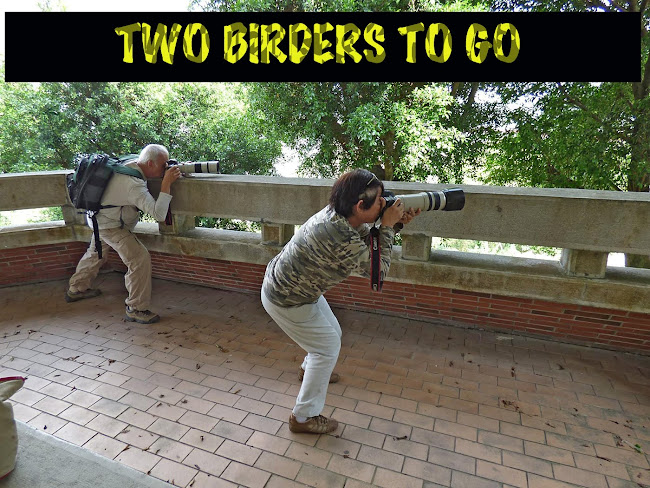We had originally planned to go to San Elijo Lagoon in
Encinitas close to San Diego. But then we woke up late (again) this Saturday.
(Must be the cool autumn nights, we reckoned). Anyway, we decided to go the San
Joaquin/Upper Newport Bay route. This should give us a good enough variety of
birds albeit the commoner species, to observe and photograph.
The very first pond we looked into at the San Joaquin
Wildlife Sanctuary contained lots, and I mean lots! of American White Pelicans
and American Avocets, some Black-necked Stilts, a sprinkling of Grebes and a
bunch of Coots. However, they were quite a distance off and the group or any
individual did not present a good photo-op. The Sparrows were scooting under
the tangled bushes at our approach and the Common Yellowthroat teased us
continually by showing themselves long enough to be seen but never long enough
to be photographed.
We both agreed that it was time to move on to Upper
Newport Bay. We briefly stopped at the edge of the road where Jamboree Avenue
crosses over the bay. Below us gliding and searching for prey was a Northern
Harrier which was soon joined by a Red-tailed Hawk. The two battled for a short
while for territorial dominance and then decided to divvy up the wide area with
the Harrier taking up the west side while the Hawk hovered over the east side.
We then proceeded to Back Bay Drive. Back Bay Drive is
about a mile long and is a one-lane, one way street that goes from west to east
and is used mostly by bikers and joggers. It hugs the southern edge of the
Upper Newport Bay on its left side. Halfway up the road is a parking place and
short boardwalk to observe birds. A few feet from the parking area is a dip
where water flows from under the road to the bay. This was where birds, lots of
them, can be found. If San Joaquin had pelicans and avocets, Upper Newport Bay
had skimmers, godwits, willets, tattlers, gulls – tons of them! Again, these
birds were so close to each other that an aesthetic photographic composition was
out of the question. Frustrated at the inability to take pictures despite the
plethora of birds, we decided to drive on. A little further down the road, I
glimpsed a duck that I have not seen before. I immediately stepped on the brake
and adroitly maneuvered the car back to the shoulder of the road overlooking
the watery nook where the ducks were. A single Eurasian Widgeon, distinguished
by its red head stood out among the commoner American Widgeons. Surveying the
quacking throng, I noticed some brown-headed ducks with a long tail. “Northern
Pintails!”, I shouted. The handsome birds, lifers for me, were digitally
captured by my camera.
Having my fill of duck photos, we continued our drive.
“Mourning Dove”, Cynthia said nonchalantly (it being a very common bird) as she
pointed to a bird perched on a leafless tree on my side of the road. I looked
at it and slammed on the brakes for the second time. “Back, back, back”, I told
Cynthia as I engaged the car in reverse and gingerly parked on a small strip of
land almost below the bird. It was actually an American Kestrel, heretofore a
very skittish bird to observe. But this one probably was used to being stared
at and thus provided me with great photo opportunities. I even managed to
change lenses and it still remained where it was, unmindful of the activities
below. Eventually it flew off perhaps hearing the growling of our stomachs (it
was well past noon).
Refreshed by visions of ducks and raptors, we drove all
the way back to Pasadena where we partook of some burritos at Baja Fresh.





.jpg)


.jpg)

.jpg)

